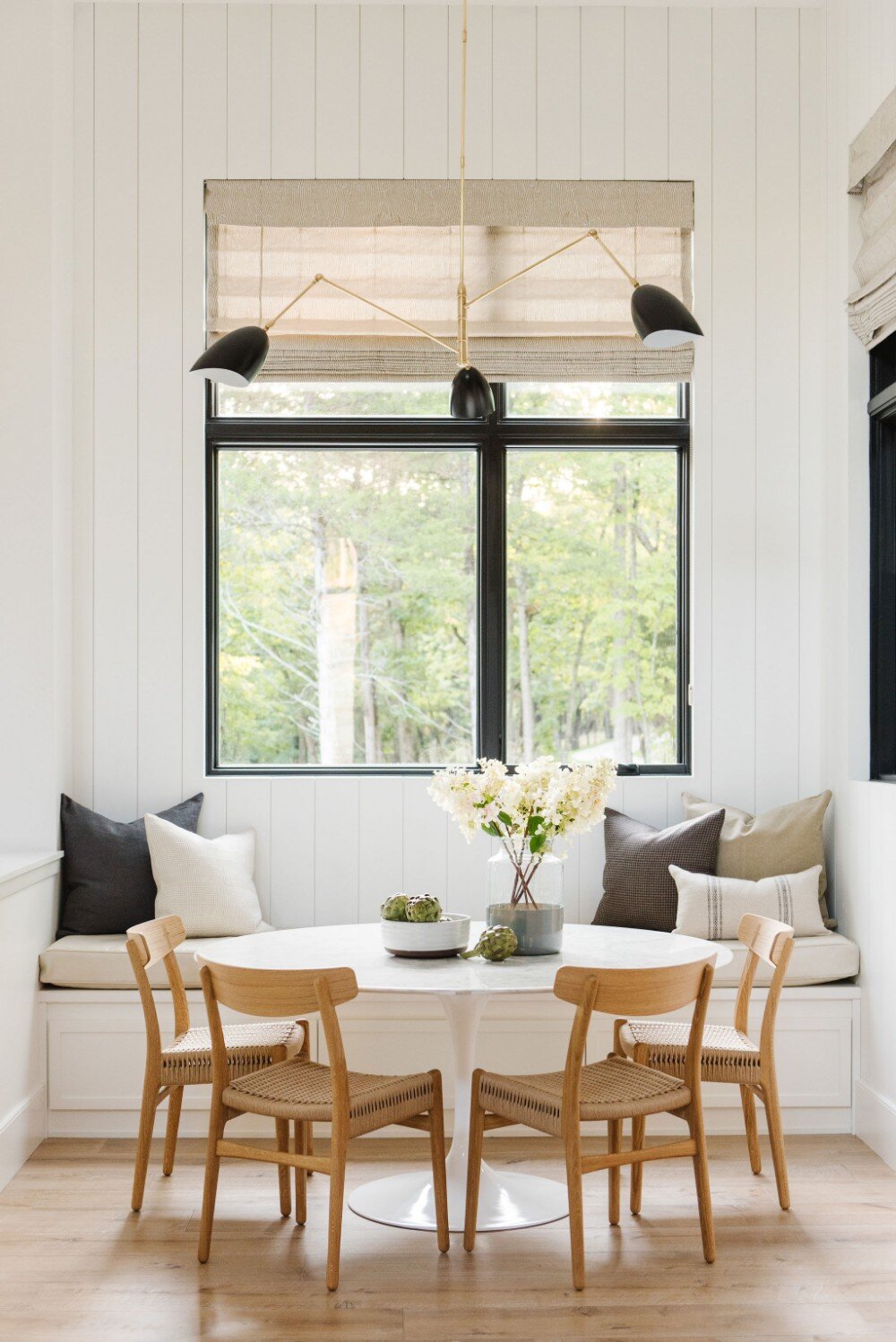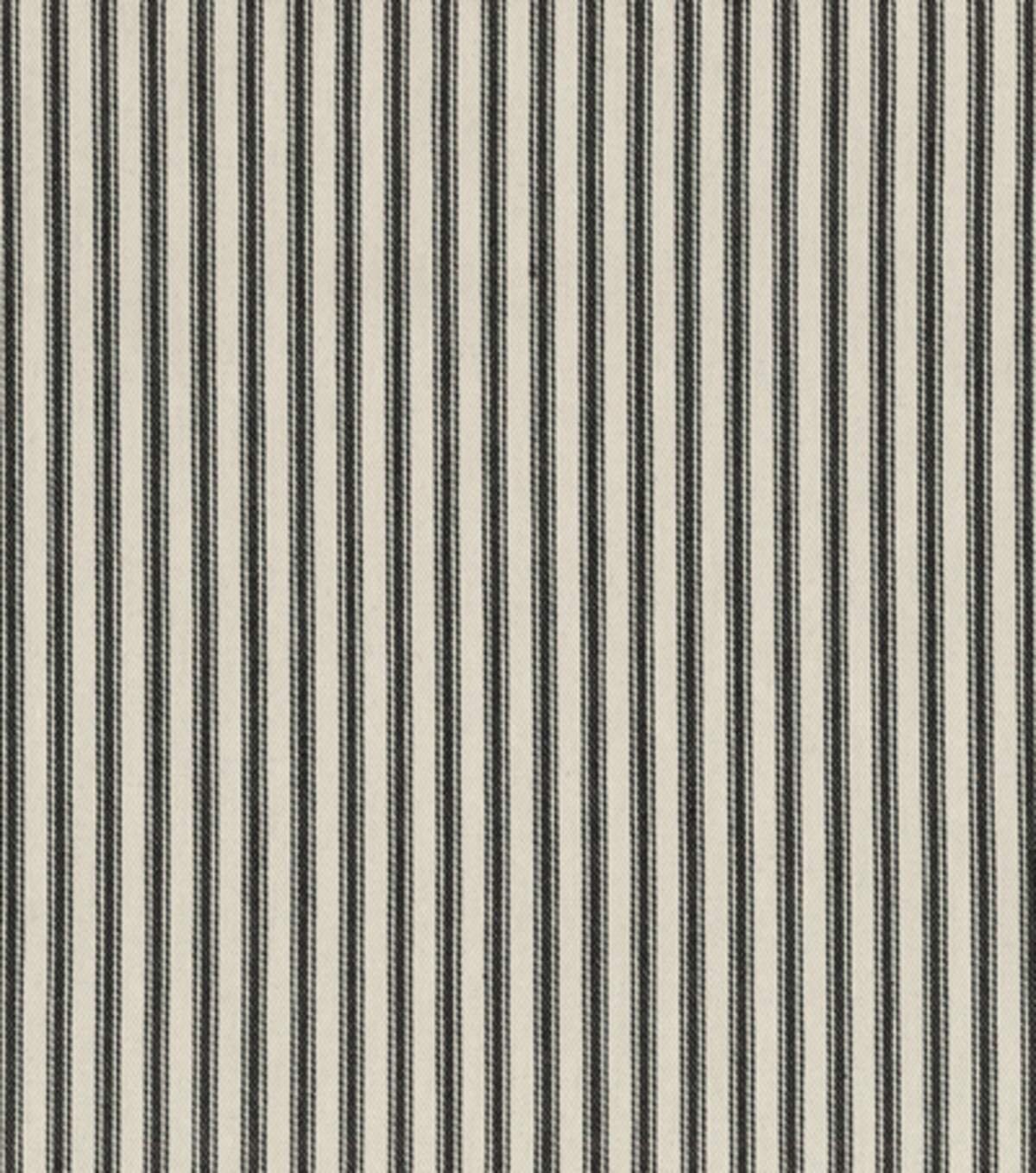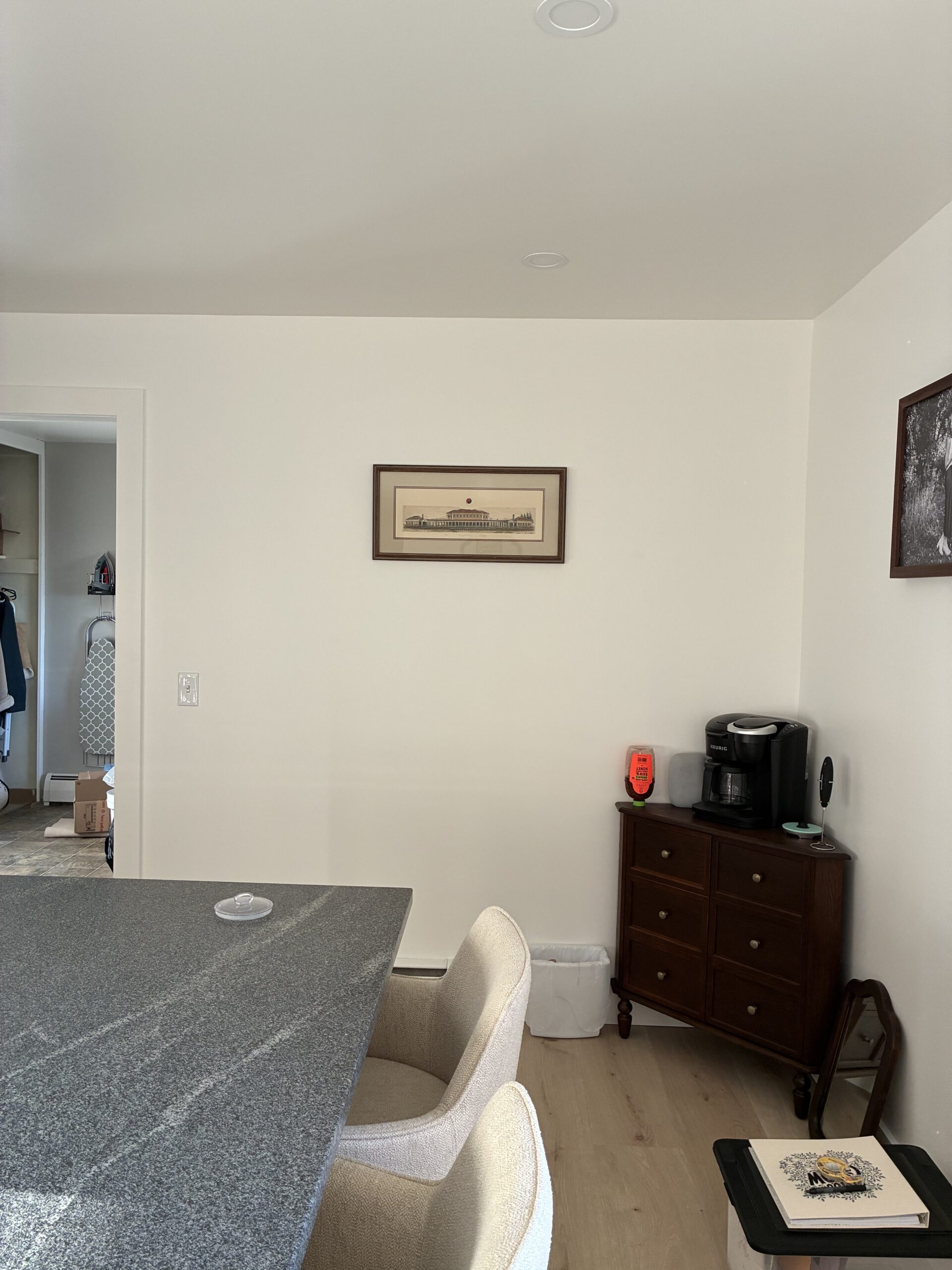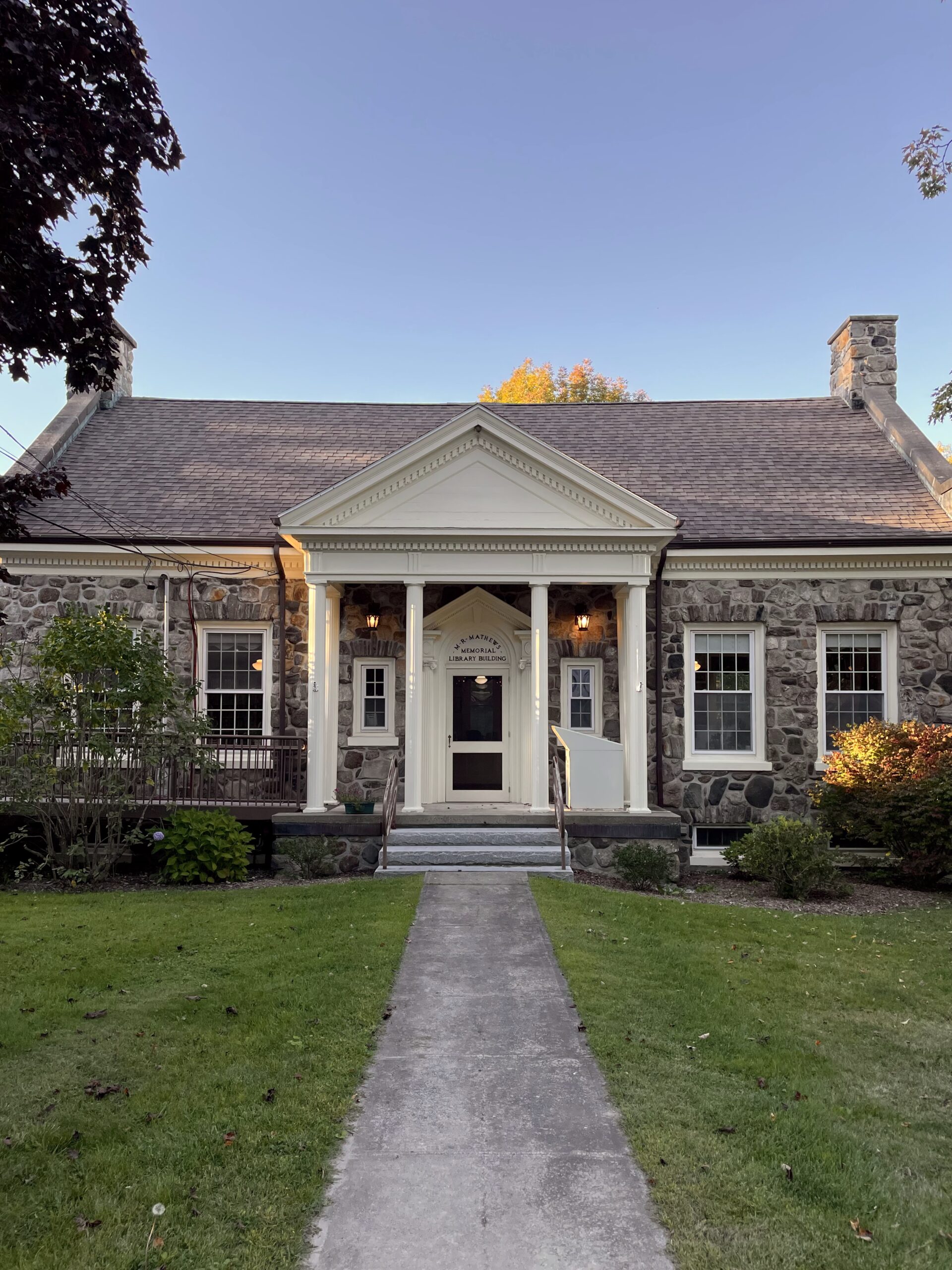Last month I shared a post all about defining interior design terms and I was pleasantly surprised how interested you guys were in learning the language! There are so many similar words that are used interchangeably when in fact they have two different meanings. Like modern vs contemporary, bolster vs lumbar, or sidelight vs transom windows. Well, because you guys seem to want to learn more I’m back for round 2!
TICKING STRIPE vs PINSTRIPE
TICKING STRIPE
Source: Joann Fabrics
PINSTRIPE
Source: Joann Fabrics
Often used interchangeably because they resemble similar things – thin vertical stripes. Ticking is in fact a thick, durable fabric which was originally intended to cover mattresses and pillows. It’s thick, tight weave prevented down feathers from poking through the fabric. The stripes seen on this fabric feature one broad (yet still thin) stripe in the middle and two narrow stripes on either side. Pinstripes on the other hand are narrower stripes and can be seen on a wide variety of materials and surfaces.
TRANSOM vs SIDELIGHT
TRANSOM WINDOW
Source: Hendricks Churchill
SIDELIGHTS
Source: Studio McGee
Transom windows are narrow horizontal windows placed above interior and exterior doors. Sidelights are narrow vertical windows that sit directly next to your front door.
ROMAN SHADE vs ROLLER SHADE vs BLINDS
ROMAN SHADE
Source: Studio McGee
ROLLER SHADE
Source: West Elm
BLINDS
Source: The Shade Store
Roman shades are often made of either fabric or a natural woven material such as bamboo, jute, or rattan. When down they lay flat, but when pulled up, they feature layers of folds at the top of the window. Roller shades on the other hand feature a slimmer shape. Just like you roll up wrapping paper or a rug, roller shades do the same and are often less visible than roman shades when up. Blinds are either plastic or wood and feature horizontal slats.
LIGHT FILTERING vs BLACKOUT CURTAINS
LIGHT FILTERING CURTAINS
Source: Nadine Stay
BLACKOUT CURTAINS
Source: Chris Loves Julia
All curtains have a different level of thickness and serve certain purposes. Some curtains are considered “light filtering” meaning they allow some light to peek through the fabric. Blackout curtains often have an additional liner on the back so that when closed, no light can filter through the fabric.
ART NOUVEAU vs ART DECO
ART NOUVEAU
Source: Martyn White
ART DECO
Source: Habitus Living
Both terms describe design styles. Art Nouveau was a movement with the intent to abandon the previous styles in order to create a new one. Its inspiration was drawn from nature and is best known for “whiplashed” curves. Art Deco came shortly after and introduced modernized lines and geometric forms. Its district characteristics include sharp edges, zig zags, and Aztec or Egyptian art.
GRANITE vs MARBLE vs QUARTZ COUNTERTOPS
GRANITE
Source: The Home Depot
MARBLE
Source: The Home Depot
QUARTZ
Source: The Home Depot
Granite countertops are made of natural stone and come in a variety of colors. It often showcases small grain patterns with natural variations. Granite can withstand high heat, doesn’t scratch easily, resists stains (if sealed properly), and is generally considered a low maintenance countertop. Marble countertops are also a natural stone usually featuring a white slab with gray veins. It is stunning and can withstand some heat; however it is porous which can lead to stains. Quartz is much like granite except that it’s not entirely natural stone. Its manufactured composition consists of both natural stone and resin. It can be damaged by high heat, however between the three countertops it is often considered the most durable.
BOLSTER PILLOW vs LUMBAR PILLOW
Source: Lulu & Georgia
Bolster pillows are long cylinder shaped pillows (like the yellow one above ) while lumber pillows have a long rectangular shape (like the black and white patterned one above).
CHEVRON vs HERRINGBONE
Source: Remodelista
Chevron is known as a long continuous zig zag formation while a herringbone pattern overlaps at every peak.
PENDANT vs CHANDELIER
PENDANT
Souce: McGee & Co
CHANDELIER
Source: Studio McGee
A pendant is a single light that suspends from the ceiling by a cord or chain. A chandelier also suspends from the ceiling but it contains many lights and is often (but not always) considered a more “glam” lighting option.
ELEVATION vs FLOOR PLAN
ELEVATION + FLOOR PLAN
Source: ArchNet
If you’re doing any sort of construction planning, you’ll most likely be working with both floor plans and elevation views. An elevation is a 2D drawing showcasing one wall or one side of a house. Floor plans are drawn from above looking directly down at your home or room to show layout, measurements, and building specifications.
DO YOU WANT
The Inside Scoop
Where behind the scenes, exclusive advice, and candid conversations are sent straight to your inbox every week.





















